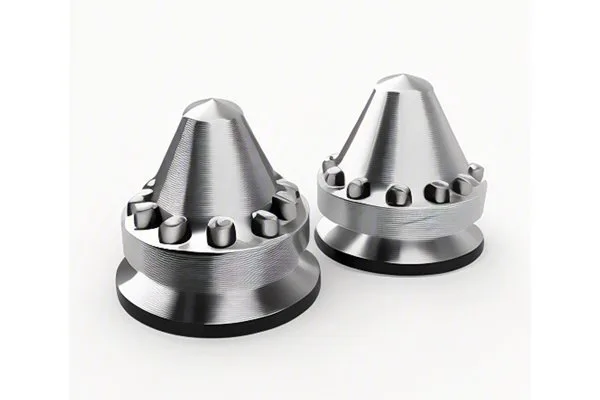Did you know that about 70% of product development time is spent on prototyping and testing? This staggering statistic highlights the critical role that prototyping plays in bringing new innovations to life. In today’s fast-paced market, where consumer expectations are constantly evolving, the ability to quickly iterate on prototypes can mean the difference between success and stagnation. For designers and engineers, Computer Numerical Control (CNC) machining has emerged as a powerful ally in this pursuit. But how exactly can CNC machining facilitate rapid iteration of prototypes?
In this comprehensive blog post, we will explore the ins-and-outs of CNC machining and its capabilities in supporting the rapid iteration of prototypes. We will break down how CNC technology enhances productivity, reduces costs, and improves the overall quality of prototypes. We will also dive into different techniques and best practices that companies can adopt to harness CNC machining effectively.
The Role of Prototyping in Product Development
Before we get into the specifics of CNC machining, it’s essential to understand why prototyping is so vital in the product development process. Prototyping allows designers and engineers to visualize their ideas, evaluate the feasibility of designs, and test functionality—and these aspects are crucial for effective product development.
What is CNC Machining?
CNC machining is an advanced manufacturing process that utilizes computerized controls to manage machinery tools. By translating CAD (Computer-Aided Design) models into machine-readable formats, CNC machining can produce highly precise parts from various materials like metal, plastic, and wood.
Benefits of CNC Machining for Prototyping
How CNC Machining Supports Rapid Iteration
CNC machines can operate continuously, allowing for the simultaneous production of multiple prototypes. This feature is beneficial for teams working on several design iterations at once, decreasing development time significantly.
CNC machining’s integration with CAD software allows designers to make real-time adjustments to prototypes. If a design change is required, engineers can modify the CAD model and regenerate the new prototype quickly, facilitating rapid iterations without degrading quality.
CNC machining supports various manufacturing techniques like turning, milling, and wire EDM (Electrical Discharge Machining). The ability to shift between these techniques allows for more flexibility in prototype design based on specific requirements, whether that be size, shape, or functionality.
CNC machining is frequently combined with other rapid prototyping technologies such as 3D printing and injection molding. This multi-faceted approach enhances the abilities of teams to produce prototypes that are both functional and aesthetically pleasing. For example, teams may employ CNC machining to produce a base prototype while utilizing 3D printing for intricate designs.
Best Practices for Using CNC Machining in Prototyping

When creating a prototype, consider the manufacturing process’s constraints. Making design adjustments to ensure that they align with CNC machining capabilities can streamline the development process and reduce costs.
Using CNC machining to create prototypes allows for continuous iterative testing. After each prototype is built, conduct rigorous tests to identify weaknesses and areas for improvement. Utilize these findings to make informed design adjustments for the next iteration.
A successful CNC machining project requires clear communication among all stakeholders, including designers, engineers, and production teams. Regular updates on design evolution ensure that everyone is aligned with the project goals and timelines.
Investing in high-quality CNC machines can make a significant difference in prototype quality. High-precision machines lead to fewer errors and increased reliability, which is crucial when producing multiple iterations.
Case Study: From Concept to Prototype
To better illustrate how CNC machining supports rapid prototyping, let’s explore a case study of a company that launched a cutting-edge gadget using CNC technology:
Company Overview
XYZ Innovations is a tech company focused on developing IoT-enabled devices. They aimed to design a smartwatch that integrates multiple health-monitoring features.
Design Process
The Future of CNC Machining in Prototyping
As technology continues to evolve, the landscape of CNC machining is likely to change alongside it. Emerging technologies such as artificial intelligence and machine learning can further refine CNC operations, enhancing efficiency and optimization.
The revolution brought about by CNC machining has transformed the prototyping landscape. By embracing this technology, designers and engineers can significantly enhance the speed and quality of their prototypes. From automating production processes to integrating seamlessly with CAD software, CNC machining provides a robust framework for fast-paced iterations.
In this blog, we have discussed the importance of rapid prototyping in product development, highlighted the benefits of CNC machining, and provided actionable insights into best practices for utilizing CNC technology effectively. By acknowledging its potential, teams can navigate the challenges of rapid iteration, leading to innovative and successful products.
The take-home message is clear: the ability to adapt and iterate quickly is essential in a competitive market. By leveraging CNC machining, companies can not only expedite their innovation processes but also enhance their product quality and customer satisfaction. So, as you consider your next big idea, remember the role that CNC machining can play in shaping your path to success!






